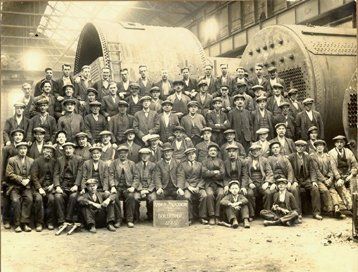
Kylemore (Paddle Steamer)
Written and researched by Paul Hennessey
Position ... 53 06 002 N / 01 17 616 EOfficial number ... 106076Depth ... 23mtrsPropulsion ... Paddle / SteamBuild date ... 1897 / launched 28/4/1897Tonnage ... 319 grt / 261 under deck / 126 netDimensions ... Length, 61mtrs, Beam, 7.3mtrs, Draught, 2.3mtrsMaterial ... SteelPower ... 93nhpSpeed ... 15 knotsDate lost ... 28/08/1940Cause of loss ... Bombed by German aircraftBuilder ... Russel& C0 ... Greenock, Kingston Yard / Yard no 405Engine builder ... Rankin & Blackmore, GreenockEngine Type ... 2 cylinder compound (diagonal) / Cylinders HP =23.5- LP = 47 x 51 inch stroke ... x1 boiler.
Below ..... A stern view of the Kylemore as she looked once converted for net laying duties (note clear view of starboard side net anchor davit)
History of the Kylemore
The Kylemore served in both WW1 and WW11. When built in 1897at Port Glasgow, her owners, Hastings, St Leonards & Eastbourne Steamboat Company Ltd named her Britannia. In 1904 she was sold to the Glasgow & South Western Railway Company and renamed Vulcan. In 1908 she changed hands once again, this time to John Williamson of Glasgow, he in turn changed her name to that of the Kylemore.
Below ... The Kylemore, (as the Britannia 1897 - 1904)
Below ...
The Kylemore, (as Vulcan 1904 - 1908)
She was taken over by the Royal Navy at the start of WW1, fitted with a 6 pounder gun and used as a minesweeper until 1920. After this time she resumed her civilian duties.
The Kylemore's services was once again called upon by the Royal Navy during WW11. She was at this time fitted with a 12 pounder gun and AA (anti aircraft) machine guns. She became net layer J101 with the 12th Minesweeping Flotilla based at Harwich.
On the 21st August 1940 she was bombed and sent to the bottom by a German Heinkel 111K bomber.
Below ... Hienkel 111K
Armament
12 Pounder Deck Gun
The QF (Quick Fire) 12 pounder gun was a common versatile 3 inch calibre naval gun that was introduced circa 1894 and was used until the middle of the 20th century. The term 12 Pounder was a rounded reference to the weight of the projectile.
Below ... 12 pounder deck gun
Holman Projector
An anti aircraft weapon used by the Royal Navy, circa 1940/1941. A pneumatic mortar designed for action against low level air attack.
Below ... Holman Projector
Lewis machine gun 303 cal
Designed by the US Army Colonel Isaac Newton Lewis in 1911. Built under licence by BSA in England from 1914, approved for service in October 1915. Round size, 303 cal.
Lewis machine gun 303 cal
Vickers .50 machine gun (anti aircraft)
The Vickers machine gun, also known as the Vickers 50 was basically the same as the 303 Vickers machine gun but scaled up to use the larger calibre 0.5 inch round.
Below .... Vickers .50 machine gun (Servive history 1932 - 1954)
Below ... Live ammunition from the Vickers .50 machine gun (Mandy Frary)
On the wreck can be found in large quantities ammunution from the Vickers macine gun, please note, much of this is still live and should be left well alone.
Below .... General layout of the Kylemore as converted for net laying duties
Below ... Workers of Rankin & Blackmore of Greenock, builders of the Kylemore's engine and boiler

Lives lost
Link to Youtube dive footage of the Kylemore
Charles Carter (Riggers Mate), James Green (Riggers Mate), Joseph Jones (Leading Seaman), James Kilkie (Stoker), Ronald Simmons (Ordinary Seaman), George Turner (Boom Engineer), Arthur Vince (Riggers Mate), George Walton (Leading Seaman).












